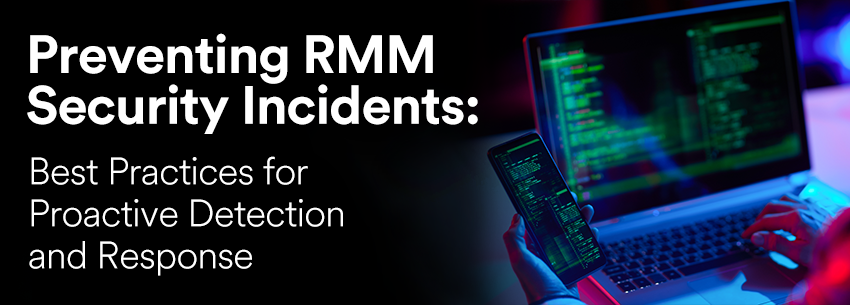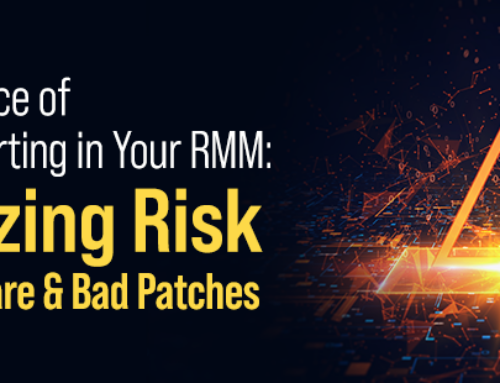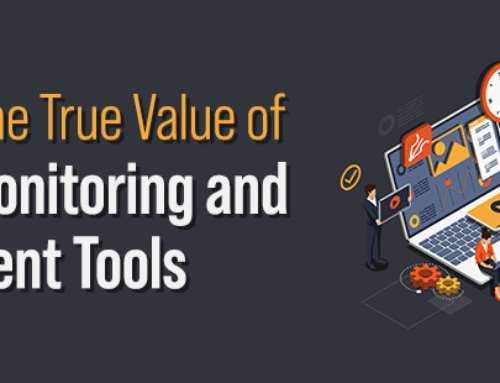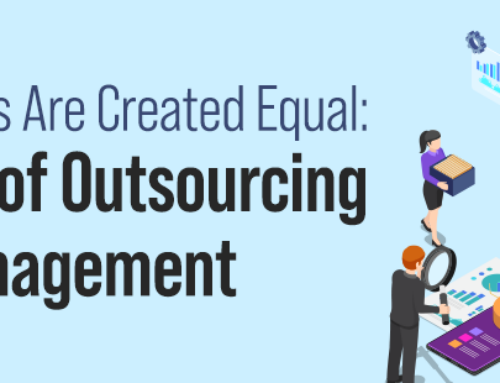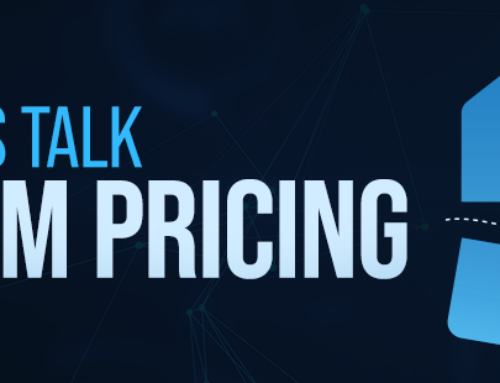Preventing RMM Security Incidents: Best Practices for Proactive Detection and Response
Remote monitoring and management (RMM) software is essential for remotely monitoring and managing IT infrastructures. In fact, one could argue that it’s one of the tools most used by managed services providers (MSPs). But even though RMM software benefits MSPs, it can also be an attractive target for cybercriminals seeking unauthorized access to critical data and systems.
In recent years, security breaches through RMM software have increased, and you must take proactive measures to protect yourself and your customers. Some recent examples of RMM software breaches include the 2020 attack on Texas-based MSP Tyler Technologies. Here, hackers gained access to the company’s RMM system. In the 2019 attack on MSPs using the ConnectWise software, hackers exploited a vulnerability in the software to gain unauthorized access to client systems. In 2021, popular RMM provider Kaseya was also attacked by ransomware, putting thousands of customers at risk.
There are several reasons hackers look to target RMM software. For example, RMM software typically has privileged access to critical systems and data, making it an attractive target for cybercriminals. In addition, many MSPs use the same RMM software across multiple clients; a successful attack on one client’s RMM system potentially compromises multiple clients’ systems.
So, how can you fight against cybercriminals looking to exploit your RMM software? For starters, take proactive measures to protect yourself and your customers.
If you’re unfamiliar with best practices, here are the fundamentals:
- Evaluate an RMM provider’s security capabilities. What is the vendor offering? What are other MSPs saying about it? Compare the vendor’s reputation with other options in the market.
- Implement strong access controls to limit access to RMM software, ensure only authorized personnel can access the system, and review access logs regularly to detect any unusual activity or unauthorized access attempts.
- Ensure that the RMM software you’re using patches and regularly updates the software to address known vulnerabilities. It’s much harder for cybercriminals to exploit vulnerabilities when there are none.
- Enable multi-factor authentication (MFA). Read that again, and then do it.
- Take the necessary steps to educate employees and clients on best practices for cybersecurity, such as avoiding phishing scams and using strong passwords. Cybersecurity awareness training is key.
By taking the steps necessary to be proactive about protection, detection, and response, you can protect yourself from RMM software security incidents. As a result, you ensure that your reputation as a value-added provider to your customers remains strong. You can continue to grow your business safely and securely for many years.
